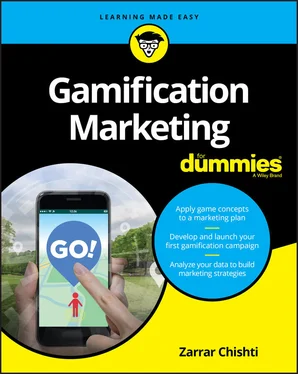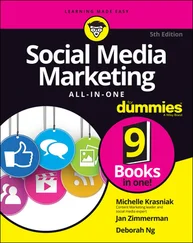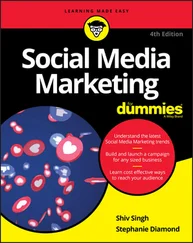Think about establishing incentives. Consider what you want to give away as an incentive. It could be a new product, digital content, or promotional coupons, for example. Whatever it is, you need to offer a clear incentive in order to make the gamification work with your audience. Your audience needs a reason to aim toward earning the coveted gold badge.Research what works with others in your industry or ask your audience what they would like to receive from your next campaign.
Keep it as simple as possible. A complex gamification marketing campaign may get lost on your audience. Look at the campaign from your audience’s point of view. If they can’t figure out your gamification elements quickly, they’ll move on. These days, people have relatively short attention spans and many distractions, so consider making each achievement or gamification milestone relatively short.
Start thinking about who you’ll want to work with for your creative and technical tasks. Define your ideal time frame for developing and launching your gamification marketing campaign, and set your budget. Gamification may be new to your marketing strategy, so look to outsource talent that specializes in gamification (see Chapter 5).
Plan your launch. Your audience cannot play your awesome gamification campaign if they don’t know it exists. By using a combination of a planned successful launch, a targeted email campaign, social media promotions, and a researched media outreach, you can ensure your game reaches everyone who would love to play it (see Chapter 9).
Don’t be afraid to experiment with your gamification elements. There is no bible or “best way” to creating gamification marketing campaigns. Gamification elements are designed to personalize the experience and continually increase the challenge involved for your audience. The only way you’ll know which element is right for your audience is to take the plunge and make educated choices.
 Stay up to date on new gamification elements to keep your marketing strategy fresh for your audience. Subscribe to gamification blogs written by industry experts. Here are a few I recommend:
Stay up to date on new gamification elements to keep your marketing strategy fresh for your audience. Subscribe to gamification blogs written by industry experts. Here are a few I recommend:
Gamelearn ( www.game-learn.com/serious-games-gamification-blog ): Gamelearn’s blog explains how games can apply to business environments.
Gamification Nation ( www.gamificationnation.com ): This blog offers fresh gamification content presented in a fun way.
Gamified UK ( www.gamified.uk ): Gamified UK is a great place to start learning about gamification and game theory more broadly.
Yu-kai Chou ( https://yukaichou.com ): Yu-kai Chou is an author and international keynote speaker on gamification and behavioral design, and his blog is a great resource.
Chapter 2
Getting to Know Gamification Models
IN THIS CHAPTER
 Looking at the game options at your disposal
Looking at the game options at your disposal
 Choosing the right settings for your audience
Choosing the right settings for your audience
 Avoiding common mistakes
Avoiding common mistakes
You and your team have lots of gamification options and elements. The key is understanding all these options and how they can benefit your campaign.
Be sure to keep your intended audience in mind when you’re building your campaign. Understanding your audience will help you make the right choices and, ultimately, the most engaging campaign.
In this chapter, I walk you through the various settings you can make for your gamification campaign and fill you in on some of the mistakes I’ve come across in gamification marketing.
When you’re just starting to think about developing a gamification marketing campaign, you’ll be glad to know that you have lots of options! But the options may be overwhelming. There is no definitive list of all the options at your disposal, but over many years working with many clients, I’ve come up with ways to make sense of all this information. And that’s what this section is about.
Here, I introduce you to the six game types you have to decide on:
Classic
Enterprising
Disrupting
User experience
Contributing
Community
In the following sections, I walk you through each of these game types in greater detail.
In this section, I walk you through the six game types that have individual elements that you can choose from. As you read the sections that follow, think about your target audience. First, rank the game types that your campaign associates with best. Then choose the elements that will work best for your audience from each of the game types. For instance, if your target audience is made up of other businesses, you’ll probably want to base 70 percent of your campaign on the enterprising game type and the rest on user experience and classic. Alternatively, if your clients are in the 18- to 25-year-old market, you’ll want to focus more on the community and user experience game types, because that’s what 18- to 25-year-olds are into.
The classic game type includes gamification elements that are intuitive. You can add these gamification elements to your campaign and know that your audience will be able to easily engage with it.
 If this campaign is your first gamification marketing endeavor, I recommend using the classic game type.
If this campaign is your first gamification marketing endeavor, I recommend using the classic game type.
Here are some elements commonly found in the classic game type (not every classic game will have every one of these elements, so you can pick and choose what works for you):
Strategy: Strategy involves skillful thinking and planning, in which your audience must plan a series of actions against one or more opponents. Players win through superior planning, but the element of chance is involved, too (in a much smaller role). If you’d like strategy to be a part of your game, be sure to incorporate a challenge for your audience so they can explore or manage their environment.
Investment: The goal here is to get your audience to invest their time and emotions into your game. If you achieve this goal, they’ll value your campaign. This game type typically involves more development at the design stage to ensure there is enough to engage your audience for the long term. Ultimately, you want your game to get them racing back to your campaign to ensure their progress is maintained.
Consequences: If you include this element in your classic game type, there will be a consequence for every one of your audience’s actions. Each significant action (or nonaction) should result in a visual consequence, such as rewards, badges, or points.
Progress and feedback: I cover this element in the coming chapters, where I discuss the importance of giving your audience some sort of measure of progress and feedback as they progress in your game.
Tutorials: The last thing you want is for your gamification campaign to leave your audience feeling helpless. To alleviate this problem, you can include a visual tutorial, as well as help sections at each major part of your campaign. This way, your audience will know how everything works right at the start and throughout the campaign.
Читать дальше

 Stay up to date on new gamification elements to keep your marketing strategy fresh for your audience. Subscribe to gamification blogs written by industry experts. Here are a few I recommend:
Stay up to date on new gamification elements to keep your marketing strategy fresh for your audience. Subscribe to gamification blogs written by industry experts. Here are a few I recommend: Looking at the game options at your disposal
Looking at the game options at your disposal










